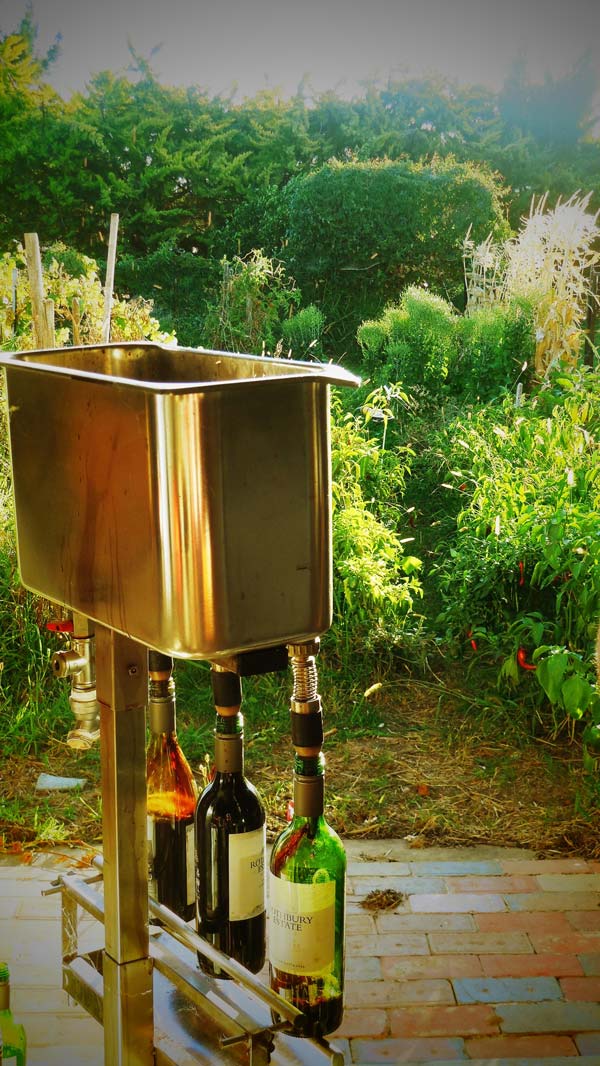My Dad, Ranko Marcetic is a winemaker from central Victoria. So I took the opportunity to ask the expert how it’s done. Originally from Croatia, Ranko’s family brought with them Croatian foods, winemaking and a lifestyle that has influenced me to this day.
Producing your own organic fruit and vegetables is a great way to save money and know that what you’re eating comes form an organic source. So why stop at food? Try something as luxurious as wine!
Yes, it is an art that takes time to learn, even years to perfect. You have to be committed, hard working and passionate and if you succeed, you’ll have created an exquisite, organic, masterpiece to be proud of.
Whether you want to grow your own small vineyard, or buy grapes from other suppliers, make sure they’re organic. Ranko only uses organic chemicals to spray his rows of Shiraz and Cabernet Sauvignon grapes, which are both red varieties.
The grapes are ready to be picked in the late summer to early autumn months. It is a good idea to pick them in the morning while the air is fresh and cool. This is because once it starts to heat up throughout the day; bacteria may begin to grow on the grapes after they are picked.
The grapes can be crushed and de-stemmed in a de-stemmer, a machine that automatically sorts the grapes from the stems. However, if you want to stick to a good, old-fashioned tradition, stomping on the grapes will work too.
While many wine makers will stick to one grape variety, you can combine different reds or whites together and Ranko has recently started creating a Shiraz, Cab-Sav blend, which has turned out to be one of his best reds to date.
Once the grapes are crushed and de-stemmed, the liquid is left in a barrel for three to four weeks. Ranko likes to leave them longer than usual to get more body and flavor in his wine, as well as a deeper colour that comes out of the skins, (which I believe is the reason it tastes so good!)
By this stage, the wine should be fully fermented, but it will still need a little more clarifying. So it is transferred into demijohns, which are glass bottles with a narrow neck that are usually encased in wickerwork. If you’re going for a pure and organic wine, glass or stainless steal is best, because plastic demijohns, will release odors and contaminate the wine. The wine is left in these containers for another couple of months.
The wine in the demijohns is racked several times (transferred from one container to another) until it’s perfectly clear and ready for bottling. This is usually done in the wintertime. It is essential not to let oxygen into the wine after it is fermented, otherwise it will start oxidizing, which will make the wine go flat.
Now the bottles are washed out and sterilised in a bucket of water with a sprinkle of sodium metabisulfite. This inorganic chemical formula is only used as a disinfectant and preserving agent, to sterilise the bottles. Don’t worry this will not harm the organic purity of the wine itself.
“Wineries and most wine-makers add sodium metabisulfite into the wine itself as a preservative, I never use this method for my wine” – Ranko Marcetic.
Hobby wine making is something that is done to be shared with family and friends. It’s a project that is valuable in the long run, because being able to share an accomplishment as unique as home made wine, with the people you love is special thing.
Plus who doesn’t want an endless supply of free delicious wine?
Tell us what you thought of this article in the comments below:


![5 Reasons You Should Travel Alone Airplane [image source: chau nguyen/ http://thedevilhatessweatpants.blogspot.com.au ], crowd ink, crowdink, crowdink.com, crowdink.com.au](https://crowdink.com/wp-content/uploads/2016/08/Chau-airplane-218x150.jpg)





























